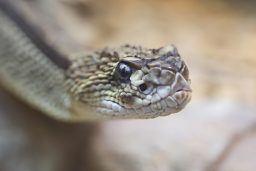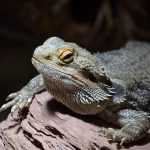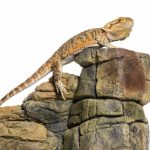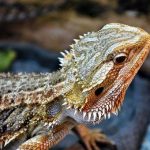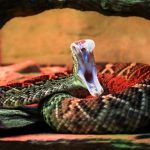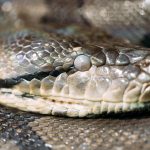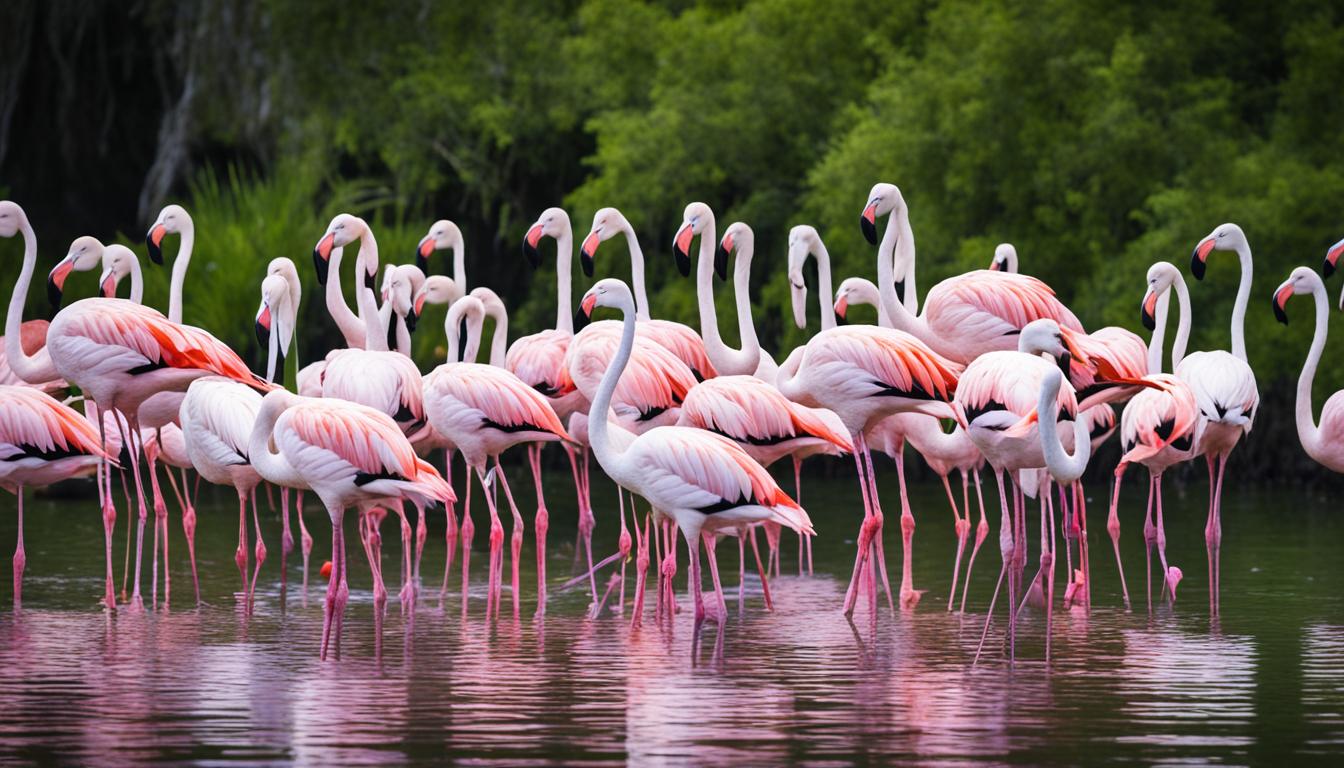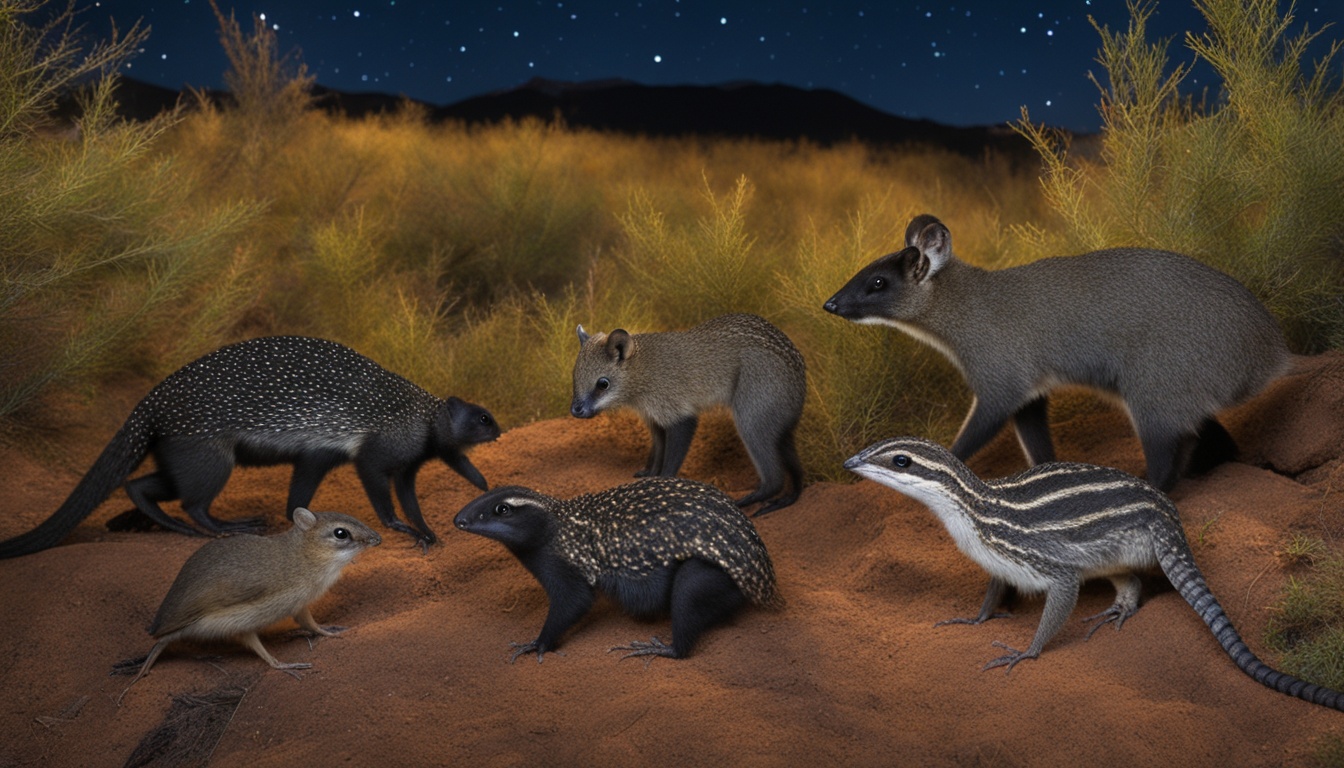The Lethal Beauty of Central and South American Snakes
Central and South America are home to some of the most stunning and deadly snakes in the world. These serpents possess a lethal beauty that captivates both researchers and enthusiasts alike. Their vibrant colors, intricate patterns, and graceful movements make them truly mesmerizing creatures.
One such example is the notorious bushmaster snake, known for its striking appearance and potent venom. With their large size and camouflage abilities, these silent killers can easily blend into their surroundings while waiting patiently for unsuspecting prey. The fer-de-lance snake is another formidable species found in this region, with its aggressive nature and highly toxic venom that can cause severe tissue damage.
The coral snakes of Central and South America also exhibit an enchanting allure with their bright red, yellow, black banding pattern. Despite their small size compared to other venomous snakes in the area, they possess neurotoxic venom that can lead to paralysis or even death if not treated promptly. It’s important to remember that while these snakes may be beautiful from a distance or behind glass enclosures, they should always be admired with caution due to their potential danger.
Understanding Venomous Serpents: An Overview of Central and South American Species
Central and South America are home to a diverse array of venomous serpents, each with its own unique characteristics and dangers. One such species is the Fer-de-Lance snake, known for its aggressive nature and potent venom. Found primarily in Central America, these snakes are responsible for numerous snakebite incidents every year. Their long fangs deliver a powerful bite that can cause severe pain, tissue damage, and even death if left untreated.
Another notable group of venomous serpents in this region is the pit vipers. These snakes include the notorious rattlesnakes and bushmasters. Pit vipers possess specialized heat-sensing pits located between their eyes and nostrils, enabling them to detect warm-blooded prey with incredible accuracy. Their venom contains a combination of toxins that can lead to tissue necrosis, blood clotting problems, and organ failure if not promptly treated.
One should also be aware of the deadly coral snakes found throughout Central and South America. These small but highly venomous creatures possess neurotoxic venom that affects the nervous system by interfering with nerve signals. Coral snake bites may initially go unnoticed due to their relatively mild pain compared to other species; however, delayed treatment can result in respiratory paralysis or cardiac arrest.
Understanding the variety of venomous serpents present in Central and South America is crucial for anyone venturing into these regions. By recognizing their distinct characteristics – from ferocious fangs to lethal venoms – individuals can take necessary precautions when encountering these dangerous reptiles.
Deadly Neotropical Vipers: Unveiling the Hidden Dangers
Deadly Neotropical Vipers: Unveiling the Hidden Dangers
Neotropical vipers, found in Central and South America, are among the most venomous snakes in the world. With their vibrant colors and intricate patterns, these serpents possess a lethal beauty that can easily captivate unsuspecting prey. However, beneath their striking appearance lies a hidden danger that should not be underestimated.
One of the most notorious neotropical vipers is the Bothrops genus, commonly known as pit vipers. These snakes have heat-sensing pits located between their eyes and nostrils, allowing them to accurately strike at warm-blooded prey even in complete darkness. Their venom contains a potent cocktail of toxins that can cause severe tissue damage and blood clotting disorders if left untreated.
Another deadly species is the Crotalus horridus, or timber rattlesnake. Found primarily in North America but also extending into parts of Central America, this viper possesses long fangs capable of delivering a powerful bite. Its venom contains neurotoxins that attack the nervous system, causing paralysis and potentially leading to respiratory failure if medical intervention is delayed.
The fer-de-lance (Bothrops asper) holds its place as one of the deadliest neotropical vipers due to its aggressive nature and highly toxic venom. Responsible for numerous snakebite fatalities each year across its range from Mexico to northern South America, this viper strikes with lightning speed when threatened or disturbed. Its venom causes intense pain along with systemic effects such as bleeding disorders and organ failure.
These examples represent just a fraction of the hidden dangers posed by neotropical vipers lurking within Central and South American jungles. It is crucial for anyone venturing into these regions to exercise caution and respect for these formidable creatures’ capabilities. Understanding their behaviors and knowing how to respond appropriately during an encounter can mean the difference between life-threatening consequences or surviving unscathed amidst the dangers of these venomous serpents.
The Ferocious Fangs: Exploring the Venomous Snakes of Central and South America
Central and South America are home to some of the most venomous snakes in the world. These serpents possess a deadly arsenal in their fangs, allowing them to immobilize prey or defend themselves from potential threats. One such species is the Fer-de-Lance snake, known for its long fangs and potent venom. Found primarily in Central America, this aggressive predator strikes swiftly and injects its toxic venom into its victims, causing severe tissue damage and sometimes even death.
Another formidable snake found in these regions is the Bushmaster. With its large size and powerful jaws, it possesses an impressive set of fangs that can deliver a lethal dose of venom. This nocturnal hunter relies on stealth and camouflage to ambush unsuspecting prey, making it one of the most feared snakes in Central and South America.
Lastly, we cannot overlook the Coral snakes that inhabit these territories. Their vibrant colors serve as a warning sign for their potent neurotoxic venom. Although they may be smaller compared to other venomous snakes in the region, their bites can have devastating consequences if left untreated.
These ferocious fanged creatures remind us of nature’s raw power and our need for caution when encountering them. It is crucial to respect their habitats while also being prepared with knowledge about first aid measures should an unfortunate encounter occur. Understanding these venomous serpents not only allows us to appreciate their beauty but also helps ensure our safety when exploring the diverse landscapes of Central and South America.
Pit Vipers: Masters of Camouflage and Venom in Central and South America
Pit vipers, found throughout Central and South America, are known for their mastery of camouflage. These snakes have evolved to blend seamlessly into their surroundings, making them incredibly difficult to spot. Their coloration and patterns allow them to hide among leaves, rocks, and tree branches with ease. This ability not only helps them avoid predators but also enables them to ambush unsuspecting prey.
In addition to their remarkable camouflage skills, pit vipers possess a deadly venom that makes them formidable predators. The venom of these snakes is primarily hemotoxic, meaning it affects the blood and tissues of its victims. It contains enzymes that break down cells and proteins in the body, causing severe pain, tissue damage, and even death if left untreated.
One unique feature of pit vipers is the heat-sensing pits located on each side of their heads between the eyes and nostrils. These pits allow them to detect infrared radiation emitted by warm-blooded animals nearby. With this thermal vision system, they can accurately strike at prey even in complete darkness or dense vegetation.
These characteristics make pit vipers some of the most fascinating yet dangerous creatures in Central and South America’s snake population. Their ability to blend into their environment combined with potent venom and advanced sensory abilities make encounters with these serpents potentially lethal. Understanding their behavior, habitat preferences, and warning signs can help humans navigate safely through snake territory while appreciating the incredible diversity present in our natural world.\n
Discovering the Deadly Coral Snakes of Central and South America
Coral snakes are highly venomous serpents found in Central and South America, known for their vibrant colors and deadly bites. These slender creatures belong to the Elapidae family and are characterized by their distinctive red, yellow, and black banding patterns. While they may appear beautiful and harmless, coral snakes possess one of the most potent neurotoxic venoms among all snake species.
The venom of a coral snake attacks the nervous system, causing paralysis that can lead to respiratory failure if left untreated. Unlike other venomous snakes that strike quickly and retreat, coral snakes tend to hold onto their prey before injecting their venom through small fangs at the front of their mouths. Due to this behavior, it is crucial not to underestimate these seemingly docile reptiles.
Identifying a coral snake can be challenging as its coloration resembles nonvenomous species like milk snakes or false corals. A useful mnemonic phrase often used by experts is “red touch yellow kills a fellow; red touch black friend of Jack.” This saying refers to the order of color bands on the snake’s body: if red touches yellow first (or next), it indicates a dangerous coral snake; if red touches black first (or next), it suggests a harmless mimic. However, relying solely on this phrase may be risky as variations exist within different regions. Therefore, caution should always be exercised when encountering any brightly colored serpent in Central or South America’s diverse ecosystems.
The Silent Killers: Unraveling the Secrets of Central and South American Bushmasters
Bushmasters, also known as Lachesis snakes, are among the deadliest serpents found in Central and South America. These venomous reptiles possess a potent hemotoxic venom that can cause severe tissue damage and disrupt blood clotting mechanisms in their prey. With an average length of 6 to 8 feet, bushmasters are not only intimidating in size but also possess a stealthy hunting technique that makes them silent killers.
Unlike other venomous snakes that rely on speed or camouflage for hunting, bushmasters have developed a unique strategy to capture their prey. They patiently lie in wait for hours, blending perfectly with their surroundings thanks to their intricate scale patterns and coloration. When unsuspecting prey ventures too close, these deadly serpents strike with lightning-fast precision, injecting a lethal dose of venom into their victims. Their ability to remain motionless for extended periods combined with their powerful bite makes them formidable predators.
The secretive nature of bushmasters adds an element of danger when encountering them in the wild. Due to their cryptic appearance and preference for remote habitats such as rainforests or dense jungles, spotting these elusive creatures is rare. It is crucial for individuals exploring these regions to exercise caution and be aware of the potential presence of this silent killer lurking nearby. Understanding the behavior and habitat preferences of bushmasters can greatly reduce the risk of accidental encounters and ensure safety while venturing into Central and South American wilderness areas.
Unforgiving Assassins: An In-depth Look at the Fer-de-Lance Snakes of Central and South America
The fer-de-lance snakes, found in Central and South America, are known for their deadly reputation. These venomous serpents strike fear into the hearts of many due to their potent venom and aggressive behavior. With a length that can reach up to 7 feet, these formidable predators are well-equipped to take down their prey.
One of the most striking features of the fer-de-lance is its triangular-shaped head, which houses long fangs capable of delivering a powerful bite. Their venom contains a mixture of toxins that can cause severe tissue damage and disrupt blood clotting, leading to potentially fatal consequences if left untreated. It is crucial for individuals living or traveling in areas inhabited by these snakes to exercise caution and be aware of their presence.
Despite their dangerous nature, it’s important to note that fer-de-lance snakes play an essential role in maintaining ecological balance within their habitats. As ambush predators, they primarily feed on small mammals such as rodents and birds, helping control population numbers. Understanding the behavior and characteristics of these unforgiving assassins allows us to appreciate their place in the intricate web of life while also respecting the potential dangers they pose.
The Deadly Constrictors: Anacondas and Boas of Central and South America
Anacondas and boas are two of the most well-known and formidable constrictor snakes found in Central and South America. These massive serpents have evolved to become expert predators, using their powerful bodies to squeeze the life out of their prey. Anacondas, specifically the green anaconda, can grow up to 30 feet long and weigh over 500 pounds, making them one of the largest snake species in the world. Boas, on the other hand, may not reach such extreme sizes but are still capable of overpowering large animals with their muscular bodies.
Both anacondas and boas possess incredible strength that allows them to tackle a wide range of prey. They rely on constriction as their primary method for subduing victims before swallowing them whole. By coiling tightly around their target, these constrictors exert immense pressure that restricts blood flow and prevents breathing, ultimately leading to suffocation or cardiac arrest for their unfortunate prey.
Despite being fearsome predators, anacondas and boas are generally non-aggressive towards humans unless provoked or cornered. However, it is important for individuals venturing into areas where these snakes reside to exercise caution and respect their natural habitats. While encounters with these giants are rare due to their elusive nature, it is crucial to maintain a safe distance if ever coming across one in order to avoid any potential harm.
The deadly constrictors – anacondas and boas – exemplify nature’s ability to create magnificent yet intimidating creatures. With astonishing size combined with lethal hunting tactics like constriction, they dominate as apex predators within Central and South American ecosystems. Understanding these remarkable snakes’ behavior helps us appreciate both their beauty as well as the importance of preserving their habitats for generations to come
Are There Any Overlapping Venomous Snakes Between Asia and Central/South America?
Venomous snakes found in asia differ from those in Central/South America. While both regions house a diverse range of venomous serpent species, there are no known overlapping species between them. The unique habitats and geographical isolation contribute to the distinct variety of venomous snakes found in Asia and Central/South America.
Surviving the Encounter: Precautions and First Aid for Snakebites in Central and South America
Snakebites can be a serious and potentially life-threatening situation, especially in Central and South America where venomous snakes are abundant. Therefore, it is crucial to take precautions when venturing into snake habitats. One of the most important measures is to wear protective clothing such as long pants and boots while exploring these regions. This can greatly reduce the risk of snakebites by providing a physical barrier between your skin and any potential snake encounters.
In the event of a snakebite, immediate first aid should be administered before seeking professional medical help. The first step is to try to remain calm and keep the affected limb immobilized at or below heart level. It is essential not to panic or attempt any DIY remedies such as sucking out the venom or applying tourniquets, as these methods have been proven ineffective and may even worsen the situation.
Instead, it is recommended to clean the wound gently with soap and water if available, without scrubbing or causing further damage. Applying a sterile bandage over the bite site can help prevent infection. Additionally, it’s important to remember that time is critical when dealing with snakebites; therefore, contacting emergency services immediately for transportation to a hospital equipped with antivenom is imperative for proper treatment.
By taking necessary precautions and having basic knowledge of first aid for snakebites in Central and South America, individuals can increase their chances of survival in case they encounter one of these venomous reptiles. Remembering that prevention remains key – avoiding unnecessary risks by respecting snakes’ habitats – will ultimately contribute towards minimizing dangerous encounters with these fascinating yet potentially lethal creatures found throughout this region.
What are some of the most venomous snakes in Central and South America?
Central and South America are home to several highly venomous snakes, such as the Fer-de-Lance, Bushmasters, and Coral Snakes.
How can I identify venomous snakes in Central and South America?
It is important to educate yourself about the characteristics of venomous snakes in the region, such as their distinctive color patterns, fangs, and behavior. It is also advisable to consult local experts or field guides for accurate identification.
What should I do if I encounter a venomous snake in Central or South America?
If you encounter a venomous snake, it is crucial to remain calm and slowly back away from the snake. Do not try to handle or provoke it in any way. Give the snake enough space to retreat and remove yourself from the area.
What precautions can I take to avoid snakebites in Central and South America?
To minimize the risk of snakebites, it is recommended to wear appropriate protective clothing, such as long pants and boots, when walking through snake-prone areas. Avoid walking through tall grass or dense vegetation where snakes may hide. Stay on established trails whenever possible.
What should I do if I get bitten by a venomous snake in Central or South America?
If you are bitten by a venomous snake, it is essential to seek medical attention immediately. While waiting for medical help, try to stay calm and keep the affected limb at or below heart level. Do not attempt to suck out the venom or apply tourniquets or ice.
What first aid measures can I apply for snakebites in Central and South America?
First aid for snakebites includes immobilizing the affected limb with a splint or sling, keeping the victim calm and at rest, and cleaning the wound with soap and water. It is important to remove any constrictive clothing or jewelry from the affected area. However, the primary treatment for snakebites is antivenom administered by medical professionals.
Are all snakes in Central and South America venomous?
No, not all snakes in Central and South America are venomous. However, it is crucial to treat all encounters with snakes as potentially dangerous and maintain a safe distance to avoid accidents.
Can snakebites in Central and South America be fatal?
Yes, snakebites in Central and South America can be fatal if not treated promptly and appropriately. Seeking immediate medical attention is crucial to increase the chances of survival.
Is it safe to handle or capture snakes in Central and South America?
It is highly discouraged to handle or capture snakes, especially venomous ones, in Central and South America unless you are a trained professional. Snakes can be unpredictable, and attempting to handle them without proper knowledge and equipment can be extremely dangerous.
Are there any preventive measures I can take to reduce the risk of snakebites while traveling in Central and South America?
Some preventive measures include staying on designated paths and avoiding walking through snake habitats, using a flashlight in areas with poor visibility, and being cautious when reaching into crevices or hiding spots where snakes may be present. Additionally, educating yourself about the local snake species and their habitats can help you make informed decisions and minimize the risk of snakebites.

